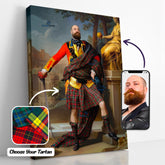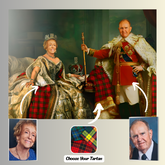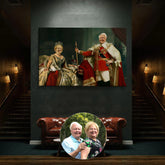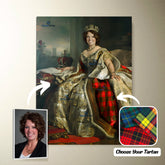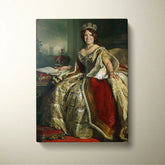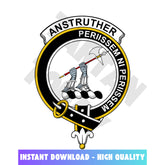-
Clan Anstruther Tartan Crest, Badges, Heraldry, Clans, Family Scotland PNG, Digital ClipArt High Quality DG70
Clan Anstruther Tartan Crest, Badges, Heraldry, Clans, Family Scotland PNG, Digital ClipArt High Quality DG70 DIGITAL FILE ONLY* ** This listing is an INSTANT DIGITAL DOWNLOAD, not a physical item. An instant download is a digital file you can download and use immediately **...- $3.49
$5.99- $3.49
- Unit price
- per
-
Clan Anstruther Tartan Polo Shirt Viking Wolf PN73 - Anstruther Tartan
Clan Anstruther Tartan Polo Shirt Viking Wolf PN73 Description: Crafted in 100% polyester with your own design which combines comfort and vogue. This shirt has some'great features, it has 3 buttons, elastic collar and cuffs. 12.35 Oz. Made from polyester fabric. 3 buttons, elastic...- $38.25
- $38.25
- Unit price
- per
- Anstruther Tartan
-
Clan Anstruther Tartan Polo Shirt Half of Me - Cross Style XQ18 - Anstruther Tartan
Clan Anstruther Tartan Polo Shirt Half of Me - Cross Style XQ18 Description: Crafted in 100% polyester with your own design which combines comfort and vogue. This shirt has some'great features, it has 3 buttons, elastic collar and cuffs. 12.35 Oz. Made from polyester...- $38.25
- $38.25
- Unit price
- per
- Anstruther Tartan
-
Clan Anstruther Tartan Polo Shirt - Royal Coat Of Arms Style RW37 - Anstruther Tartan
Clan Anstruther Tartan Polo Shirt - Royal Coat Of Arms Style RW37 Description: Crafted in 100% polyester with your own design which combines comfort and vogue. This shirt has some'great features, it has 3 buttons, elastic collar and cuffs. 12.35 Oz. Made from polyester...- $38.25
- $38.25
- Unit price
- per
- Anstruther Tartan
-
Clan Anstruther Tartan Polo Shirt - Lion Rampant And Celtic Thistle Style MZ43 - Anstruther Tartan
Clan Anstruther Tartan Polo Shirt - Lion Rampant And Celtic Thistle Style MZ43 Description: Crafted in 100% polyester with your own design which combines comfort and vogue. This shirt has some'great features, it has 3 buttons, elastic collar and cuffs. 12.35 Oz. Made from...- $38.25
- $38.25
- Unit price
- per
- Anstruther Tartan
-
Clan Anstruther Tartan Polo Shirt - Believe In Me Style KO33 - Anstruther Tartan
Clan Anstruther Tartan Polo Shirt - Believe In Me Style KO33 Description: Crafted in 100% polyester with your own design which combines comfort and vogue. This shirt has some'great features, it has 3 buttons, elastic collar and cuffs. 12.35 Oz. Made from polyester fabric....- $38.25
- $38.25
- Unit price
- per
- Anstruther Tartan
-
Clan Anstruther Tartan Polo Shirt - Alba Celtic Style QW71 - Anstruther Tartan
Clan Anstruther Tartan Polo Shirt - Alba Celtic Style QW71 Description: Crafted in 100% polyester with your own design which combines comfort and vogue. This shirt has some'great features, it has 3 buttons, elastic collar and cuffs. 12.35 Oz. Made from polyester fabric. 3...- $38.25
- $38.25
- Unit price
- per
- Anstruther Tartan
-
Clan Anstruther Tartan Polo Shirt RR96 - Anstruther Tartan
Clan Anstruther Tartan Polo Shirt RR96 Description: Crafted in 100% polyester with your own design which combines comfort and vogue. This shirt has some'great features, it has 3 buttons, elastic collar and cuffs. 12.35 Oz. Made from polyester fabric. 3 buttons, elastic collar and...- $38.25
- $38.25
- Unit price
- per
- Anstruther Tartan
-
Clan Anstruther Clan Unisex Polo Shirt - Celtic Tree Of Life TW55 - Anstruther Tartan
Clan Anstruther Clan Unisex Polo Shirt - Celtic Tree Of Life TW55 Description: Crafted in 100% polyester with your own design which combines comfort and vogue. This shirt has some'great features, it has 3 buttons, elastic collar and cuffs. 12.35 Oz. Made from polyester...- $38.25
- $38.25
- Unit price
- per
- Anstruther Tartan
-
Clan Anstruther Clan Polo Shirt Viking Wolf DE90 - Anstruther
Clan Anstruther Clan Polo Shirt Viking Wolf DE90 Description: Crafted in 100% polyester with your own design which combines comfort and vogue. This shirt has some'great features, it has 3 buttons, elastic collar and cuffs. 12.35 Oz. Made from polyester fabric. 3 buttons, elastic...- $38.25
- $38.25
- Unit price
- per
- Anstruther
-
Clan Anstruther Clan - Military Polo Shirt KG26 - Anstruther Tartan
Clan Anstruther Clan - Military Polo Shirt KG26 Description: Crafted in 100% polyester with your own design which combines comfort and vogue. This shirt has some'great features, it has 3 buttons, elastic collar and cuffs. 12.35 Oz. Made from polyester fabric. 3 buttons, elastic...- $38.25
- $38.25
- Unit price
- per
- Anstruther Tartan
-
Anstruther Tartan Clan Crest Badge Aloha Hawaiian Shirt Tropical Old Style NC17 - Anstruther Tartan
Anstruther Tartan Clan Crest Badge Aloha Hawaiian Shirt Tropical Old Style NC17 These Hawaiian shirts and shorts are suitable for hot summer days or beach trips with your friends, family, and loved ones. This is an excellent gift, vacation outfit, or simply revamp your...- $43.25
- $43.25
- Unit price
- per
- Anstruther Tartan
-
Clan Anstruther Crest Tartan Christmas Ugly Sweater RX10 - Anstruther Crest Tartan
Clan Anstruther Crest Tartan Christmas Ugly Sweater RX10 SIZE CHART- From $64.25
- From $64.25
- Unit price
- per
- Anstruther Crest Tartan
-
Clan Anstruther Tartan Christmas Ugly Sweater JB93 - Anstruther Tartan
Clan Anstruther Tartan Christmas Ugly Sweater JB93 SIZE CHART- From $64.25
- From $64.25
- Unit price
- per
- Anstruther Tartan
-
Clan Anstruther "Merry Christmas" Tartan Acrylic Ornament RT27 - Anstruther Tartan
Clan Anstruther 'Merry Christmas' Tartan Acrylic Ornament RT27 “Decorating the house” may be one of the most exciting tasks jotted down on your to-do list when the holiday season approaches. Yet, since shabby, dull-looking pieces of decor infest the marketplace, finding real gems that...- From $21.25
- From $21.25
- Unit price
- per
- Anstruther Tartan
-
Clan Anstruther Crest Tartan Acrylic Christmas Ornament MF81 - Anstruther Tartan
Clan Anstruther Crest Tartan Acrylic Christmas Ornament MF81 “Decorating the house” may be one of the most exciting tasks jotted down on your to-do list when the holiday season approaches. Yet, since shabby, dull-looking pieces of decor infest the marketplace, finding real gems that...- From $21.25
- From $21.25
- Unit price
- per
- Anstruther Tartan
-
Clan Anstruther Tartan Gnome Heart Ceramic Ornament YX69 - Anstruther Tartan Gnome
Clan Anstruther Tartan Gnome Heart Ceramic Ornament YX69 One of the best things about Christmas is that it gives you an excuse to dress up your home with all of the lovely ornaments we associate with the holiday season. With so many different types...- From $19.25
- From $19.25
- Unit price
- per
- Anstruther Tartan Gnome
-
Clan Anstruther Tartan Crest Heart Ceramic Ornament PZ33 - Anstruther Tartan
Clan Anstruther Tartan Crest Heart Ceramic Ornament PZ33 One of the best things about Christmas is that it gives you an excuse to dress up your home with all of the lovely ornaments we associate with the holiday season. With so many different types...- From $19.25
- From $19.25
- Unit price
- per
- Anstruther Tartan
-
Clan Anstruther Tartan Gnome Round Ceramic Ornament HU27 - Anstruther Tartan
Clan Anstruther Tartan Gnome Round Ceramic Ornament HU27 One of the best things about Christmas is that it gives you an excuse to dress up your home with all of the lovely ornaments we associate with the holiday season. With so many different types...- From $19.25
- From $19.25
- Unit price
- per
- Anstruther Tartan
-
Clan Anstruther Tartan Crest Round Ceramic Ornament FH61 - Anstruther Tartan
Clan Anstruther Tartan Crest Round Ceramic Ornament FH61 One of the best things about Christmas is that it gives you an excuse to dress up your home with all of the lovely ornaments we associate with the holiday season. With so many different types...- From $19.25
- From $19.25
- Unit price
- per
- Anstruther Tartan
Ex: Your Tartan + Product
Popular Products
Turn Me Royal Personalized Portrait from Your Photo, Custom Tartan. Custom Canvas Wall Art as Gift for Men
- From $32.45
- From $32.45
- Unit price
- / per
Royalty Couple Personalized Portrait from Your Photo, Custom Tartan. Custom Canvas Wall Art
- From $47.45
- From $47.45
- Unit price
- / per
The Queen Personalized Portrait from Your Photo, Custom Tartan. Custom Canvas Wall Art as Gift for Women
- From $32.45
- From $32.45
- Unit price
- / per
List Of Tartan
-
Clan A
- Abercrombie Tartan
- Aberdeen Tartan
- Abernethy Tartan
- Adair Tartan
- Adam Tartan
- Ayrshire Tartan
- Agnew Tartan
- Aikenhead Tartan
- Ainslie Tartan
- Aiton Tartan
- Allan Tartan
- Alexander Tartan
- Allardice Tartan
- Allison Tartan
- Anderson Tartan
- Angus Tartan
- Anstruther Tartan
- Arbuthnot Tartan
- Armstrong Tartan
- Arnott Tartan
- Auchinleck Tartan
- Ayrshire Tartan
-
Clan B
- Baillie Tartan
- Bain Tartan
- Baird Tartan
- Balfour Tartan
- Bannatyne Tartan
- Bannerman Tartan
- Barclay Tartan
- Baxter Tartan
- Beaton Tartan
- Bell Tartan
- Belshes Tartan
- Bethune Tartan
- Beveridge Tartan
- Binning Tartan
- Bisset Tartan
- Blackadder Tartan
- Blackstock Tartan
- Black Watch Tartan
- Blair Tartan
- Blane Tartan
- Blyth Tartan
- Borthwick Tartan
- Boswell Tartan
- Bowie Tartan
- Boyd Tartan
- Boyle Tartan
- Brisbane Tartan
- Brodie Tartan
- Brown/ Broun Tartan
- Bruce Tartan
- Buccleuch Tartan
- Buchan Tartan
- Buchanan Tartan
- Burnett Tartan
- Burns Tartan
- Butter Tartan
- Byres Tartan
-
Clan C
- Cairns Tartan
- Calder Tartan
- Callander Tartan
- Cameron Tartan
- Campbell Tartan
- Campbell of Breadalbane Tartan
- Campbell of Cawdor Tartan
- Carmichael Tartan
- Carnegie Tartan
- Carruthers Tartan
- Cathcart Tartan
- Chalmers Tartan
- Charteris Tartan
- Chattan Tartan
- Cheyne Tartan
- Chisholm Tartan
- Christie Tartan
- Clark Tartan
- Clelland Tartan
- Clephan Tartan
- Clergy Tartan
- Cochrane Tartan
- Cockburn Tartan
- Colquhoun Tartan
- Colville Tartan
- Cooper Tartan
- Couper Tartan
- Craig Tartan
- Cranstoun Tartan
- Crawford Tartan
- Crichton Tartan
- Crief District Tartan
- Crosbie Tartan
- Cumming Tartan
- Cunningham Tartan
- Currie Tartan
- Clan D
- Clan E
- Clan F
- Clan G
- Clan H
- Clan I
- Clan J
- Clan K
- Clan L
-
Clan M
- Maitland Tartan
- Malcolm Tartan
- Mar Tartan
- Marjoribanks Tartan
- Maxtone Tartan
- Matheson Tartan
- Maule Tartan
- Maxwell Tartan
- Meldrum Tartan
- Melville Tartan
- Menzies Tartan
- Mercer Tartan
- Middleton Tartan
- Moffat Tartan
- Moncrieffe Tartan
- Montgomery Tartan
- Monypenny Tartan
- Moncreiffe Tartan
- Monteith Tartan
- Morrison Tartan
- Mouat Tartan
- Moubray Tartan
- Mow Tartan
- Muir_More Tartan
- Muirhead Tartan
- Munro Tartan
- Murray Tartan
- Murray of Atholl Tartan
-
Clan Mc/Mac
- MacAlister Tartan
- MacArthur Tartan
- MacAlpine Tartan
- MacAulay Tartan
- MacBain Tartan
- MacBean Tartan
- MacBeth Tartan
- MacCallum Tartan
- MacCraig Tartan
- MacColl Tartan
- MacCorquodale Tartan
- MacDiarmid Tartan
- MacDonald Tartan
- MacDonald of Clanranald Tartan
- MacDonald of Sleat Tartan
- MacDonnell of Glengarry Tartan
- MacDonnell of Keppoch Tartan
- MacDougall Tartan
- MacDowall Tartan
- MacDuff Tartan
- MacEwen_MacEwan Tartan
- MacEdward Tartan
- MacFarlane Tartan
- MacGill Tartan
- MacGillivray Tartan
- MacGregor Tartan
- MacGowan (McGowan) Tartan
- MacHardy Tartan
- MacIan Tartan
- MacInnes Tartan
- MacIntyre Tartan
- MacKay Tartan
- MacKillop Tartan
- MacKellar Tartan
- Mackinlay Tartan
- MacKenzie Tartan
- Mackie Tartan
- MacKinnon Tartan
- MacKintosh / MacIntosh Tartan
- MacLeod Tartan
- MacMillan Tartan
- MacNab Tartan
- MacNaughton Tartan
- MacNeil / MacNeill Tartan
- MacNeil of Colonsay Tartan
- MacNicol Tartan
- MacPhail Tartan
- MacPhee_MacFie Tartan
- MacPherson Tartan
- MacQuarrie Tartan
- MacQueen Tartan
- MacRae Tartan
- MacRow Tartan
- MacSporran Tartan
- MacTaggart Tartan
- MacTavish Tartan
- MacThomas Tartan
- McCorquodale Tartan
- McCulloch Tartan
- McFadzen Tartan
- McGeachie Tartan
- McIver Tartan
- McKerrell Tartan
- Clan N
- Clan O
- Clan P
- Clan R
-
Clan S
- Sandilands Tartan
- Scott Tartan
- Scrymgeour Tartan
- Selkirk Tartan
- Sempill Tartan
- Seton Tartan
- Shaw Tartan
- Shepherd Tartan
- Sinclair Tartan
- Skene Tartan
- Skirving Tartan
- Smith Tartan
- Somerville Tartan
- Spalding Tartan
- Spens Tartan
- Spottiswood Tartan
- Stevenson Tartan
- Stewart Tartan
- Stewart of Appin Tartan
- Stirling Tartan
- Strachan Tartan
- Straiton Tartan
- Strange Tartan
- Strathclyde District Tartan
- Stuart of Bute Tartan
- Sutherland Tartan
- Swinton Tartan
- Clan T
- Clan U W Y
- Request Your Clan
Clan Anstruther (Anstruther Tartan)
1. Clan Anstruther History (Anstruther Tartan)
William de Candela received the Anstruther estates early in the 12th century from Alexander I of Scotland. His origin has been the subject of many speculations, but current research points to the possibility that he was an Italian Norman.

There is proof William, Count of Candela, was approached for assistance by William I of England, also known as William the Conqueror. His son (or perhaps his grandchild) was sent. Perhaps this William de Candela was the one King Alexander granted territory to.

A William who helped the monks of Balmerino Abbey was the son of William de Candela. He gave the initial location in Anstruther that is now home to the Scottish Fisheries Museum.
Henry is referred to as "Henricus de Aynstrother dominus ejusdem" in a charter confirming land transfers to Balmerino Abbey after the de Candela name was abandoned in the following generation.
His son, also known as Henry, swore loyalty to Edward I twice in 1292 and 1296 and accompanied Louis IX on his crusades to the Holy Land.
The barony was established in 1483 by Andrew Anstruther of Anstruther, who also fought at Flodden in 1513. He married Christina Sandilands, a scion of Robert II's Princess Jean and Sir James Sandilands of Calder.
David, his son, fought at Pavia in 1520 alongside Francis I of France in the French Scots Regiment. This branch of the family survived until 1928, when the final Baron d'Anstrude passed away, marking the end of the line.
The youthful James VI of Scotland was accompanied by Andrew's great-great-grandson. James gave him the title of Hereditary Grand Carver, which the family patriarch still holds today. He assumed the title of Master of the Household in 1595.
After the Union of the Crowns in 1603, James and his son William traveled to London together. He received the title of Knight of the Bath during James' coronation. Along with Sir Robert, his younger brother, he held the position of Gentleman of the Bedchamber under James VI.
During the civil war, his son Sir Phillip fought for the royalists. At Worcester, he was taken prisoner, and until the Restoration, his property was stolen. Robert, his third son, became a baronet in 1694 and bought Balcaskie in 1698.
His eldest child, Lord Anstruther, served as a Privy Councilor and Lord of Session. The second Earl of Hyndford's daughter, Lady Margaret Carmichael, was wed to John, the son of Lord Anstruther.
The Hon. Jean Leslie, the granddaughter of the civil war general David Leslie, was wed to a fifth brother, Sir Alexander Anstruther.
The third Baronet of Balcaskie's eldest son, Robert, served in the Scots Fusilier Guards and participated in the Egyptian Campaign under Abercromby and the Peninsular War.
He oversaw a brigade at Vimiero in 1808 and the rear guard throughout the retreat to Corunna before passing away there in 1809.
Later generations carried on the military and political traditions of their forebears by serving as parliamentarians and in numerous British regiments as the Grenadier Guards, Royal Engineers, Black Watch, and Coldstream Guards. The Military Cross was given to Sir Ralph Anstruther, the 7th Baronet, during the Second World War.
The chief's seat is still located in Fife at Balcaskie.

2. Clan Anstruther Tartans
There is no Anstruther tartan that is registered. The Fife District tartan is connected to the clan, though.
Fife District
3. Clan Anstruther Crest & Coats of Arms
3.1 Clan Anstruther Crest
Worn by all of the name and ancestry
Crest Description:
Two arms in armour holding a pole-axe with both arms gauntleted, Proper
3.2 Clan Anstruther Coat of Arms
A note on Coats of Arms:
With the exception of civic or corporate arms, a person is granted a coat of arms under Scottish heraldic law. A 'family coat of arms' does not exist.
With the exclusions listed above, the weapons depicted below are personal weapons. The only person authorized to use these weapons is the grantee.
ARMS
Argent, three piles Sable
MOTTO
Perlissem ni perlissem (I would have perished had I not persisted)
SUPPORTERS
Two falcons with wings expanded Proper, beaked and membered Gules, gelled and jessed Or.
STANDARD
A St. Andrew's Cross Argent in the hoisted and two tracts Sable and Argent, on which is engraved the Sloban "Castle Dreel" in letters Argent upon two transverse bands Bules, two daggers in saltire Argent handled Sable surrounded by a crest coronet Or in the second compartment, and an olive branch slipped and leaved Proper in the third compartment.
PINSEL
Argent, the Crest on a Wreath of the Liveries Sable and Argent, surrounded by a strap Sable buckled and embellished Or inscribed with the Motto "Perlissem ni periissem" in letters Or, all within a circlet Or fimbricated Vert bearing the name and style "Anstruther of that Ilk" in letters Sable, the same ensigned of a chapeau Gules furred Ermine, and in the fly
4. Clan Anstruther People & Places
4.1 Clan Anstruther People
4.1.1 Henry Torrens Anstruther (1860-1926)
Liberal Unionist politician from the UK. He attended Eton and Edinburgh University as the second son of Sir Robert Anstruther, 5th Baronet, MP.
He graduated from law school in Edinburgh in 1884 and succeeded his father as the Liberal Unionist Member of Parliament for St Andrews Burghs from 1886 until 1903. From 1895 to 1903, he worked for the government as a Lord of the Treasury.
He served as a Justice of the Peace in the counties of Buckinghamshire and Fife and, starting in 1903, served on the Suez Canal Company's Administrative Council. From 1905 until 1910, he served as an alderman on the London County Council.
4.1.2 Sir Ralph (Hugo) Anstruther, 7th Baronet, GCVO, MC, DL (1921-2002)
He was the lone child of Captain Robert Edward Anstruther MC of the Black Watch and Marguerite Blanche Lily de Burgh, and he attended Eton and Magdalene College in Cambridge for his education.
In 1943, he received the Military Cross for his time spent serving with the Coldstream Guards. Despatches later referenced him while he was serving in Malaya in 1950.
He served as the Queen Mother's treasurer from 1961 to 1998 and her equerry from 1959 to 1998. His title as Treasurer Emeritus began in 1998. He received the CVO in 1967, was elevated to the KCVO and GCVO in the following years.
He succeeded his grandfather, Sir Windham Eric Francis Carmichael-Anstruther, 8th Baronet, to the baronetcy of Anstruther of Balcaskie in 1934, and his cousin, Sir Windham Eric Francis Carmichael-Anstruther, 8th Baronet, to the baronetcy of Anstruther of Anstruther, in 1980.
He additionally became the Queen's Hereditary Carver with the latter. His relative assumed the baronetcies in his place.
In addition, he served as a member of the Royal Company of Archers and as the deputy lieutenant of Caithnessshire from 1965 and Fife from 1960 to 1997.
7. The Anstruther Clan and the Fife District Tartan: Exploring the Connection
In the rich tapestry of Scottish clans and their tartans, the Anstruther clan stands out as a unique and intriguing entity. While the clan does not have an officially registered tartan of its own, it is commonly associated with the Fife District tartan.
This article delves deep into the history, significance, and cultural heritage of the Anstruther clan, exploring the reasons behind the absence of an officially registered tartan and the enduring association with the Fife District tartan.
Join us on this captivating journey through Scottish history and clan culture.
8. The Anstruther Clan: A Glimpse into the Past
8.1 Origins and Ancestry
The Anstruther clan traces its roots back to the ancient Kingdom of Fife in Scotland. The name "Anstruther" is believed to have originated from the Old English "Anestruther," meaning "one stream."
8.2 Connections with Scottish Royalty
Throughout history, the Anstruthers maintained close ties with Scottish royalty, serving as loyal allies and trusted advisors. Their loyalty and bravery in battle earned them the favor of the crown, solidifying their status as an influential clan.
8.3 Prominent Figures in Anstruther Clan History
- Sir Robert Anstruther: Known for his military prowess and leadership during the Jacobite uprising.
- Sir Philip Anstruther: A renowned diplomat who played a crucial role in strengthening diplomatic ties between Scotland and other countries.
- Lady Margaret Anstruther: A trailblazing woman who defied societal norms to become a prominent scholar and advocate for women's rights.
9. Tartans: A Symbol of Clan Identity
9.1 The Significance of Tartans
Tartans hold a special place in Scottish culture and serve as unmistakable symbols of clan identity, with each pattern representing a distinct lineage and history.
These unique textile designs have been woven into the fabric of Scottish tradition for centuries and continue to be highly revered to this day.
9.2 The Evolution of Tartans
Tartans have evolved over time, transitioning from simple checks and stripes to elaborate and intricate patterns.
Originally, they were predominantly associated with military regiments, but they soon became synonymous with Scottish clans, embodying their heritage, values, and sense of belonging.
9.3 Officially Registered Tartans: An Overview
To ensure authenticity and protect clan heritage, many tartans have been officially registered with the Scottish Register of Tartans.
This process involves meticulous documentation, including the design, colors, and historical significance of the tartan. These registered tartans serve as a reliable reference for clan members and enthusiasts worldwide.
10. The Anstruther Clan Tartan: The Absence of Official Registration
10.1 Unraveling the Mystery
While many clans have their own officially registered tartans, the Anstruther clan stands out as an exception.
The reasons behind the absence of an officially registered tartan for the Anstruthers are shrouded in mystery and subject to speculation.
10.2 The Challenge of Historical Documentation
One potential reason for the lack of an officially registered Anstruther clan tartan is the challenge of historical documentation.
Clan tartans were not widely recorded until the early 19th century, making it difficult to trace the specific tartan associated with the Anstruthers.
10.3 Legacy of the Fife District Tartan
Despite not having a registered tartan, the Anstruther clan has established a strong association with the Fife District tartan.
This tartan, with its distinctive green and blue color scheme, has become widely recognized as representative of the Anstruther clan and their ties to the Fife region.
11. The Fife District Tartan: A Closer Look
11.1 Origins and Design
The Fife District tartan, often referred to as the Fife County tartan, captures the essence of the region with its vivid colors and intricate pattern.
The design features a combination of greens and blues, reminiscent of the lush landscapes and expansive coastline of the Fife district.
11.2 Historical Significance
The Fife District tartan holds historical significance beyond its association with the Anstruther clan.
It is a symbol of pride for the people of Fife, representing their connection to the land, their shared heritage, and their resilience as a community.
11.3 Modern Usage and Recognition
The Fife District tartan has gained widespread recognition, not only within the Anstruther clan but also among other Scottish clans and individuals with ancestral ties to the Fife district.
It is often donned during special occasions, such as weddings, clan gatherings, and Highland games, serving as a visual representation of shared identity and heritage.
12. Beyond Tartans: Anstruther Clan Traditions
12.1 Clan Gatherings: A Celebration of Heritage
Clan gatherings play a vital role in preserving Scottish traditions and fostering a sense of community among clan members.
These gatherings often feature various cultural activities, including music, dance, storytelling, and traditional Scottish fare.
12.2 Ancestral Homelands: Exploring Anstruther
Anstruther, the ancestral homeland of the Anstruther clan, is a picturesque coastal town in the Fife district.
Visitors can immerse themselves in the rich history and beauty of the region while uncovering the roots of their ancestral heritage.
13. Frequently Asked Questions (FAQs)
13.1 Is the Anstruther clan recognized officially in Scotland?
The Anstruther clan is not currently recognized as an official clan by the Standing Council of Scottish Chiefs.
13.2 Are there any specific tartans associated with the Anstruther clan?
While the Anstruther clan does not have its own officially registered tartan, it is commonly associated with the Fife District tartan.
13.3 Can anyone wear the Fife District tartan?
Yes, the Fife District tartan is not exclusive to the Anstruther clan. It can be worn by anyone with a connection to the Fife district or an appreciation for its rich heritage.
13.4 How can I learn more about my Anstruther clan ancestry?
To delve deeper into your Anstruther clan ancestry, genealogical research and consultation with experts in Scottish heritage can prove invaluable.
Resources such as historical archives, clan societies, and DNA testing can assist in uncovering your familial connections.
13.5 Are there any ancestral castles associated with the Anstruther clan?
While the Anstruther clan does not have any ancestral castles of its own, the Falkland Palace, located in Fife, holds historical ties to the clan.
This magnificent Renaissance palace offers visitors a glimpse into Scotland's royal past and the Anstruthers' close association with Scottish royalty.
13.6 How can I show my appreciation for Anstruther clan heritage?
Demonstrating your appreciation for Anstruther clan heritage can take various forms, such as attending clan gatherings, wearing the Fife District tartan, supporting Scottish cultural events, and learning about the clan's history and traditions.
14. Conclusion
Although the Anstruther clan does not possess an officially registered tartan, its association with the Fife District tartan serves as a testament to the enduring spirit of clan pride and ancestral connections.
The rich history, influential figures, and vibrant traditions of the Anstruther clan continue to captivate the imagination and ignite a sense of belonging among its members and all those with an appreciation for Scottish heritage.
Let us celebrate the Anstruther clan and the Fife District tartan as beacons of tradition, cultural heritage, and community.
- Choosing a selection results in a full page refresh.

